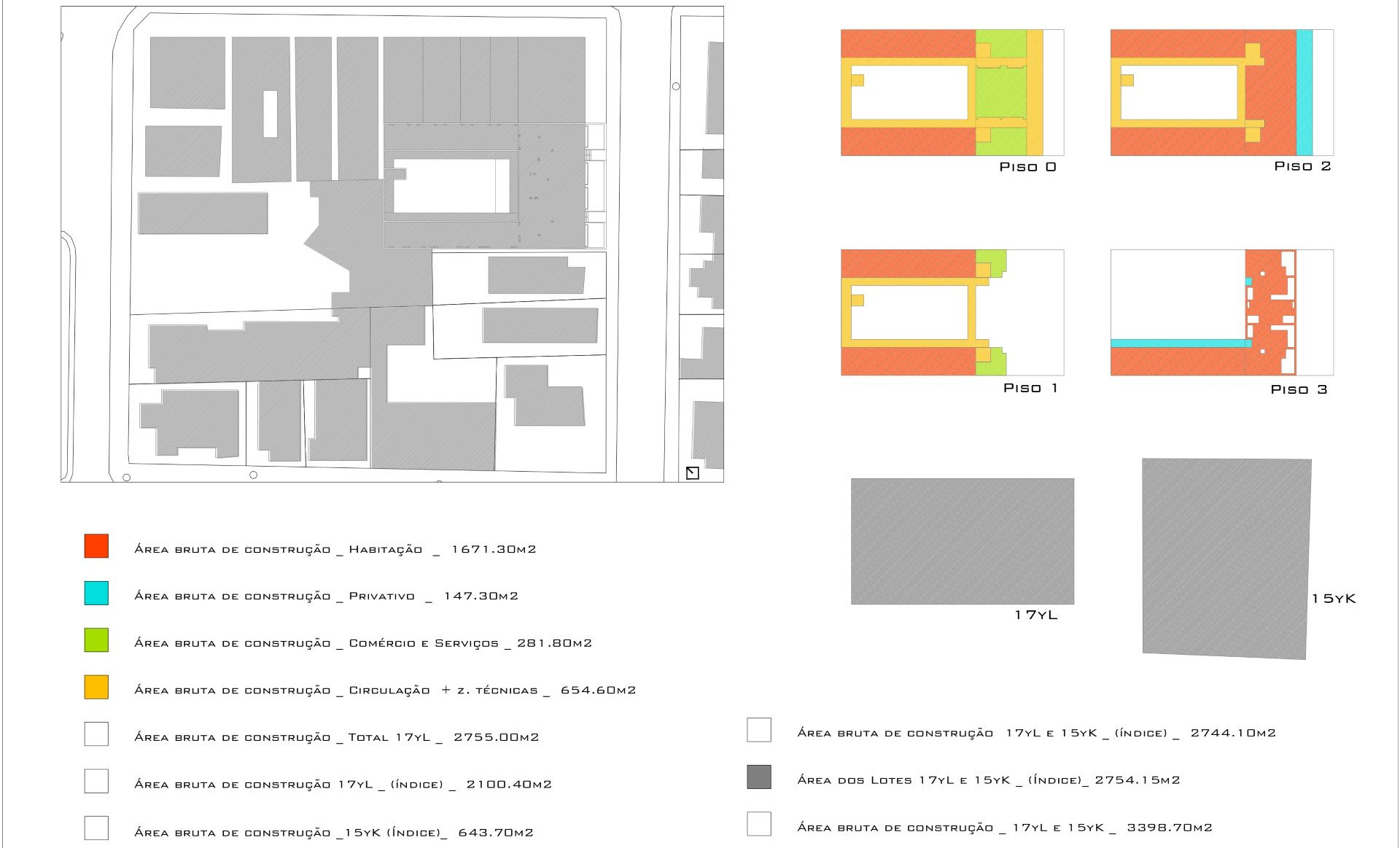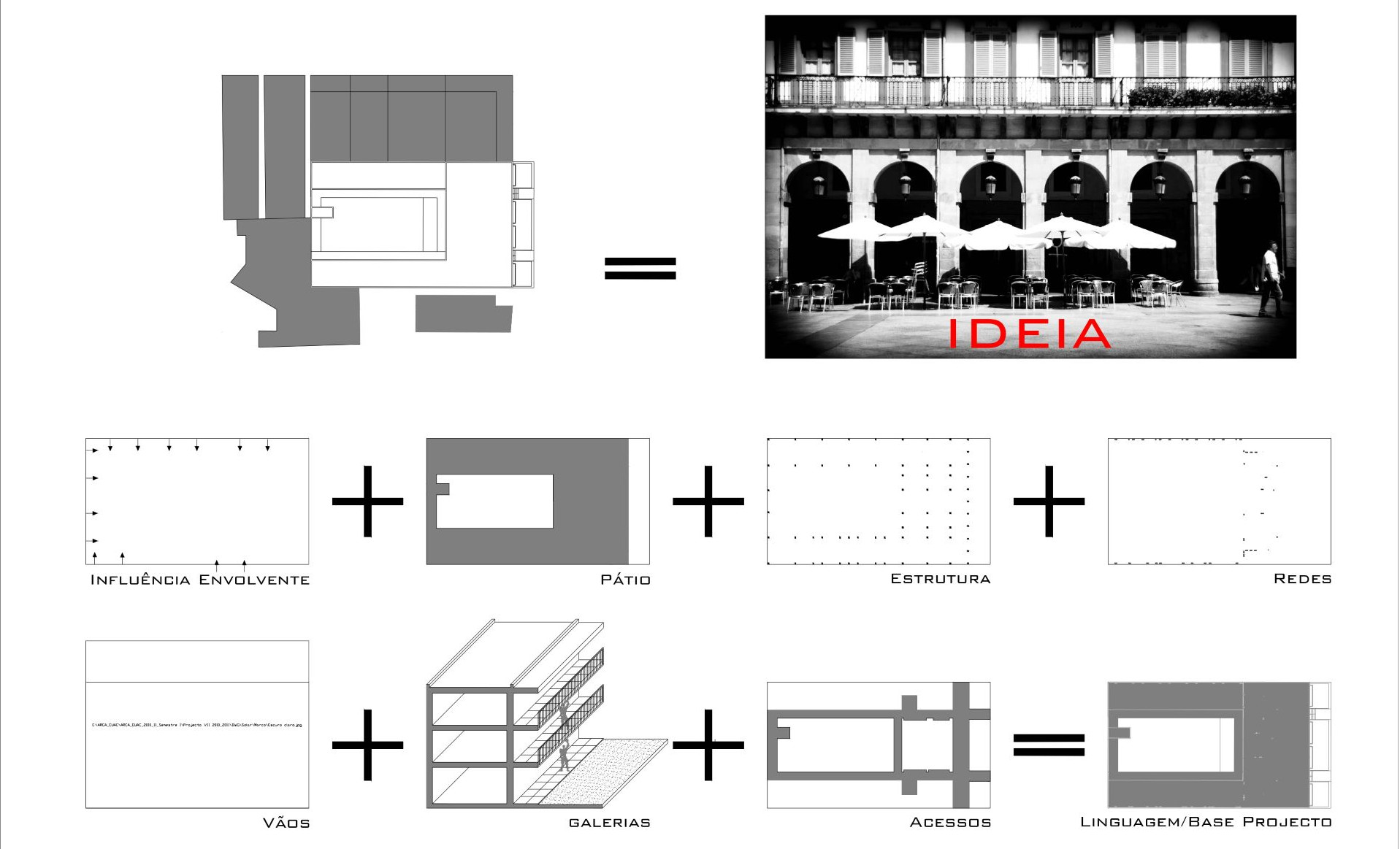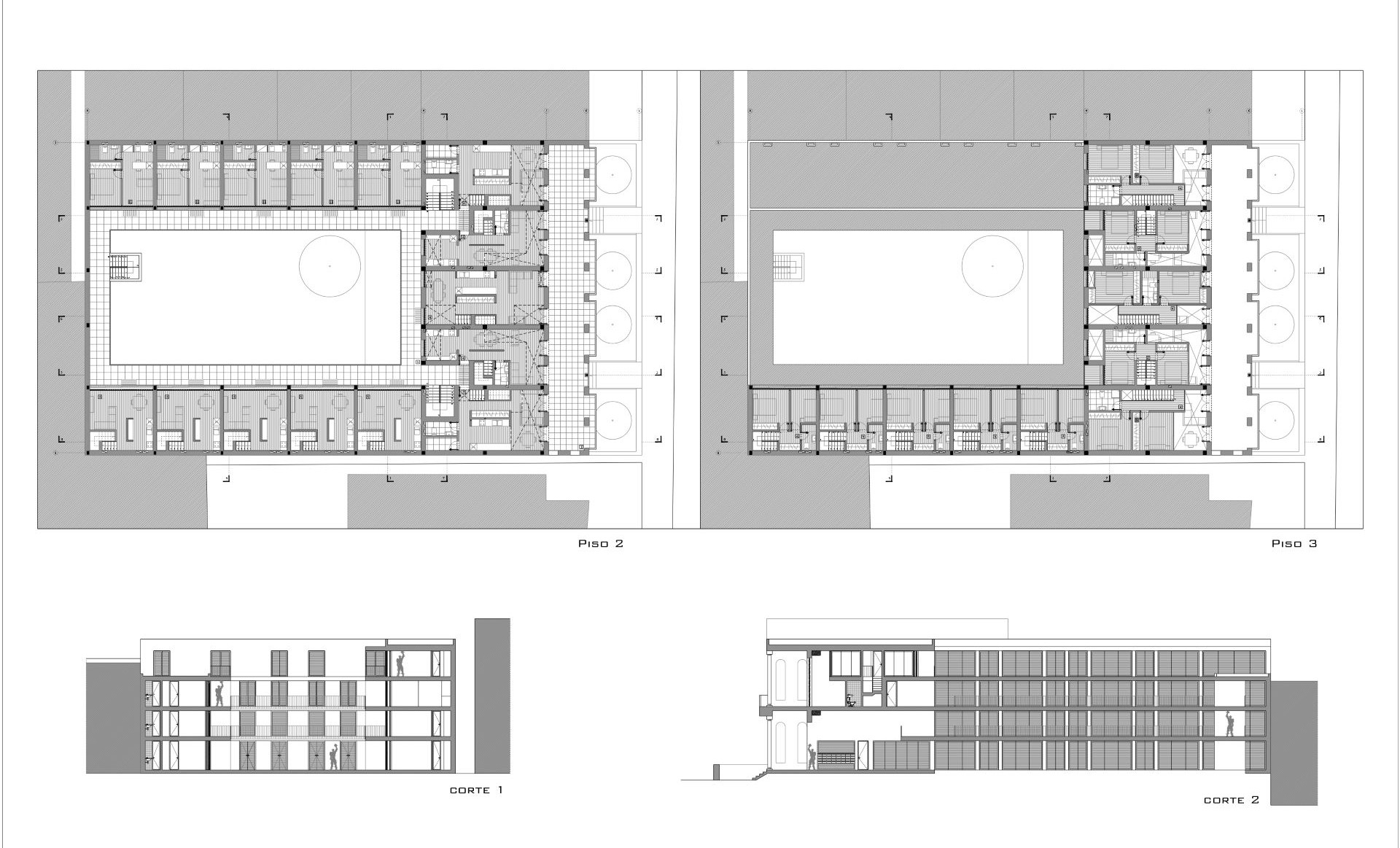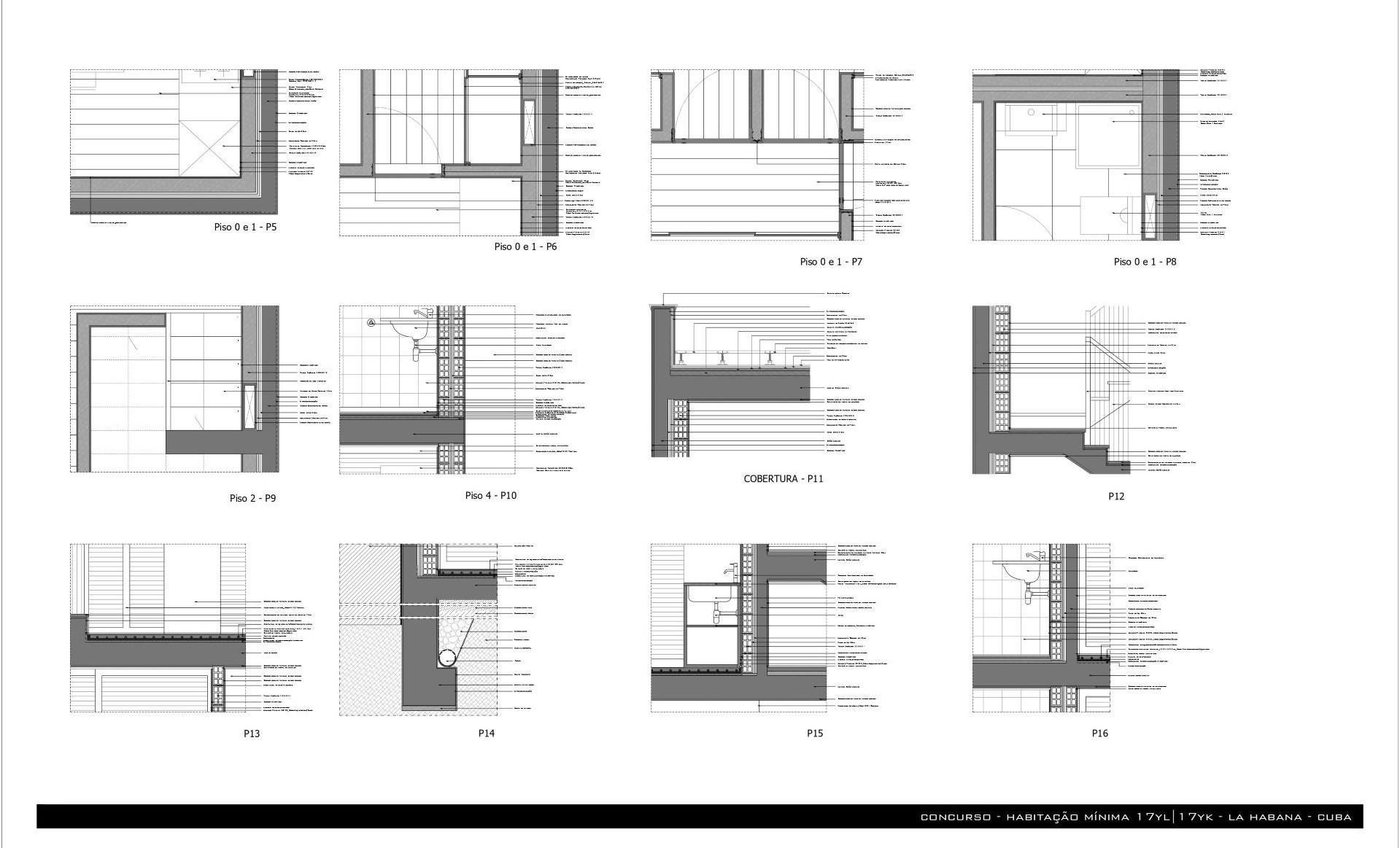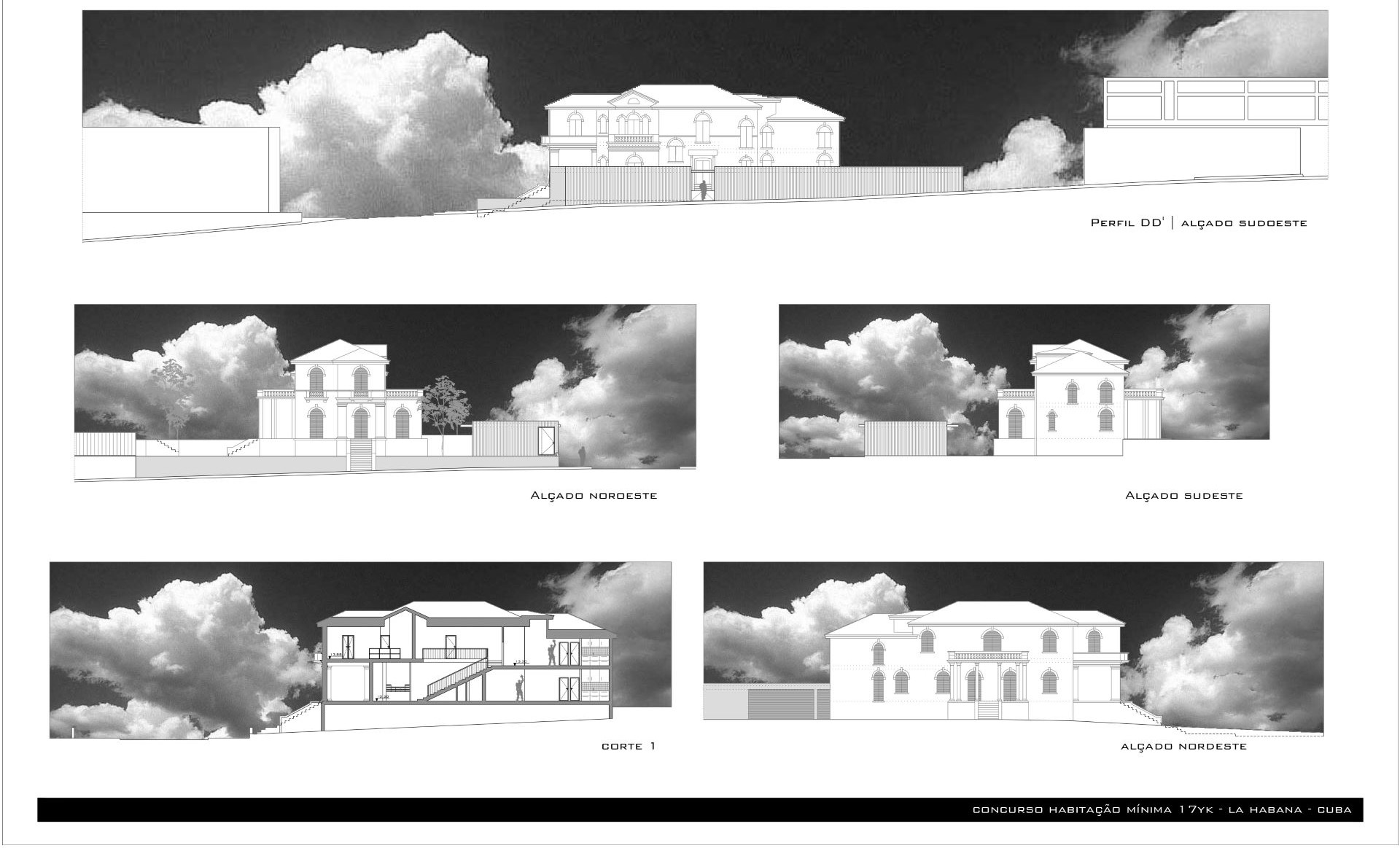Housing Minimum - Havana, Cuba
Descriptive Memory
HABANA_CUBA - Lot 17yL
Intervention Proposal:
1.1- Idea
Based on a reading of the existing construction and the way of life of the Cuban people, their limited financial capacities and the lack of decent housing, it was decided to upgrade and recover the building on lot 17yK.
The option was to unify the “two bodies” into one, creating more and better living and health conditions.
Thus, the basic idea of this proposal is to maintain the collective memory, that of housing with neighborhood and courtyard relationships. This memory consists not only of the colonial-era building and its eloquent façade, but also of the way it is, and how it has been inhabited and lived. Thus, the intention of this proposal is to requalify, rebuild and build spaces that promote this same type of experience. For this purpose, the choice is to keep the first space as a whole, the galleries, the scale, the spans and the relationship with the “second body”, which merges into the first in a symbiotic way. Thus, the construction of new housing modules is proposed in order to recreate the courtyard with its added value, the direct experience of residents with it. Thus, it is imperative that this promotes, through the conformation of the galleries, the experience of and towards the patio, as this is understood as an extension of the dwelling. It should also be noted that a greater relationship between the building and the block and the city is promoted, using the spaces on the 0th floor for commerce, something that already existed in the lot, albeit in an anarchic and random way in the garden area.
1.2 - Volumetry and its relationships with the environment
Taking into account the differences in the surrounding dimensions, it was thought that the volumetric relationship should be towards the human scale, that of the resident/user of the space, and there was a concern for the adjacent volumes, so the one that “cooked” with the remaining block, not harming the existing ones, nor those that could be built. Knowing in advance that opening gaps at the end of the lot is a mistake (in fact, it is not allowed) because it prevents the construction of neighboring lots, and because there is a risk of running out of the image and function of said gaps.
1.3 - Implementation and its relationships with the environment
The concern present here was to keep the lot conformation, with small adjustments in front of it, and of course it is in the construction that makes up the patio and that lives in a gallery. In its relationship with the surroundings, there was a concern not to dissociate the lot from the block and the city. The gallery could be opened to the adjoining lot, but this is not done here because it would end up being more of the same, and not a way of solving or influencing the way of inhabiting spaces for collective use/circulation. What would eventually happen would be the usurpation of private territory. Thus, the lot is delimited by its extremes, with no openings for the contiguous lots.
1.4 - Programmatic distribution and circulations
We chose to separate the program into three poles, the first being that of the commerce that exists in front of the lot, in the gallery peripheral to the street, although it is also tangential in the sense that it opens up to it through its human relationship, to the attract the population to relate to the building and its people. The second pole is the unifying one, the patio, which combines with the social area for collective use, as is the case with housing. Horizontal circulations are made in a gallery, either in front of the lot, or in the body that encompasses the modules and on the upper floor of the first body. The verticals are always done using stairs, either in common areas or inside duplex dwellings.
1.5 - Structure and Language
In the "first body", the structure of the building is maintained, that is, it is made through the use of existing resistant walls, but with the addition of pillars and reinforcement beams, so that a new floor and floor slab can be built. coverage with the various components necessary for its greatest and best response capacity. In the bodies to be built, the structure is framed, with the closure being made using ceramic brick masonry. The slabs are solid and occasionally lightened, so that you can overcome large spans without the need for very thick slabs. At the language level, the intention is that the structure defines the spaces, and not the other way around. Thus, an attempt was made to reinterpret the reading of the façade and its wooden frames, as well as its galleries, transposing this reading to the rest of the construction, keeping the rhythm, although clearly it is, in a merely analogous way and not as a pure reproduction.
HABANA_CUBA - Lot 15yK
Intervention Proposal:
Idea
In this lot there is the responsibility of closing the block,
When looking at this house, it can be seen that it has been completely mischaracterized. Thus, and knowing that it has associated with it a line of architecture that is very characteristic of Havana, it was decided here to demolish everything that is not part of its essence. As at the academic program level there is a need to comply with the construction index, a single-storey building was designed for this lot, in addition to the redevelopment of the base housing, so that it can be seen that it is something new, but at the same time it connects with the house. For this purpose, it is the paths that make this connection, in addition to tying it to the lot boundary wall and, in turn, closing the block.
This being a ciudadela must continue to give it that character and are the private gardens of the ground floor rooms which give it that character and assume such importance that the houses they live for them. Structurally, it should be noted that the “mother” house continues with the same construction system, which is based on resistant walls in ceramic brick masonry, and the new wing is entirely porticoed and closed in ceramic brick masonry. The spans are quite wide in order to give light, in this case indirect since they are open to the north.
